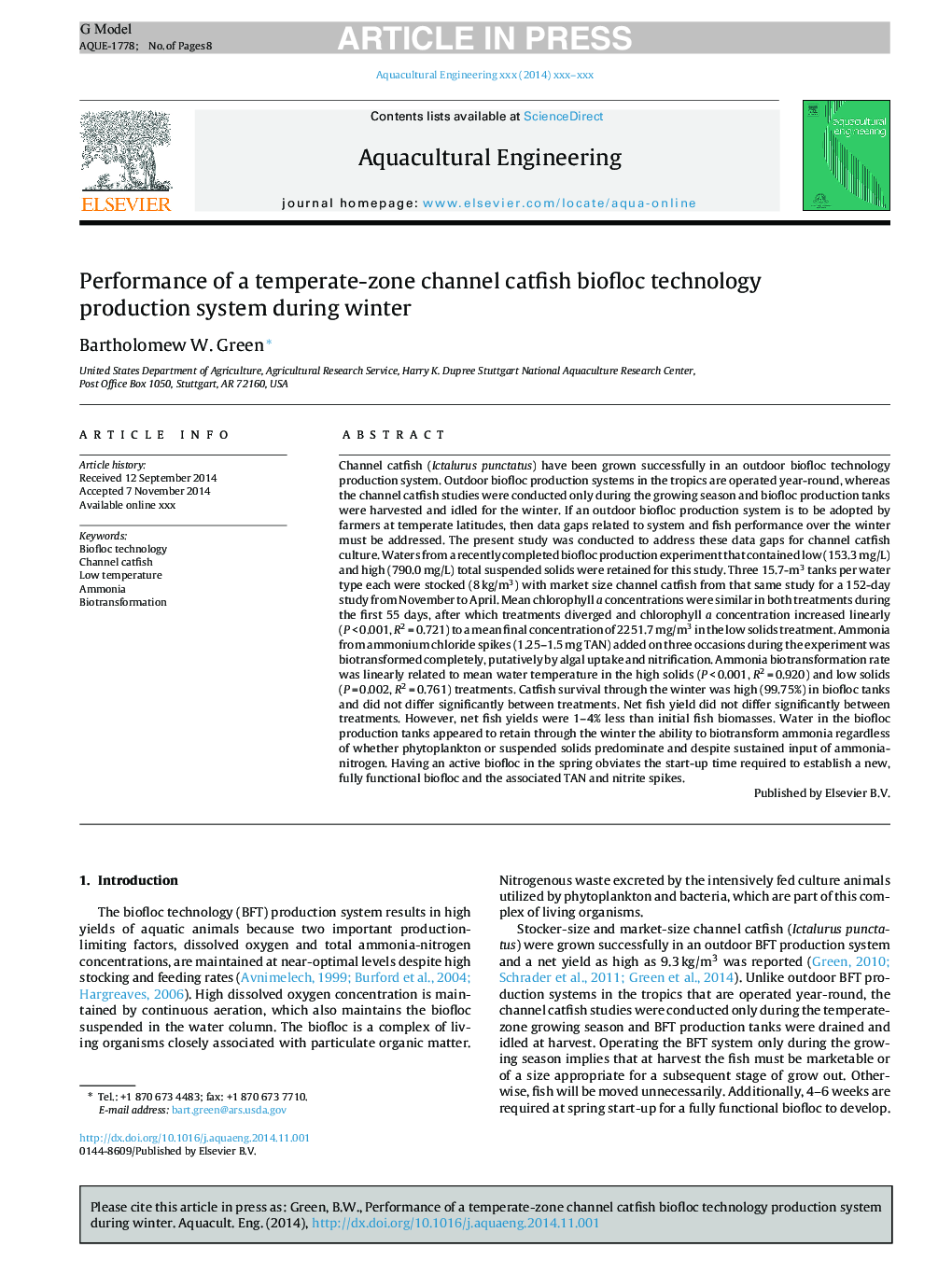| کد مقاله | کد نشریه | سال انتشار | مقاله انگلیسی | نسخه تمام متن |
|---|---|---|---|---|
| 6381319 | 1625706 | 2015 | 8 صفحه PDF | دانلود رایگان |
عنوان انگلیسی مقاله ISI
Performance of a temperate-zone channel catfish biofloc technology production system during winter
ترجمه فارسی عنوان
عملکرد یک سیستم تولید فن آوری زیست شناسی کانفری گربه در طول زمستان به کار می رود
دانلود مقاله + سفارش ترجمه
دانلود مقاله ISI انگلیسی
رایگان برای ایرانیان
کلمات کلیدی
موضوعات مرتبط
علوم زیستی و بیوفناوری
علوم کشاورزی و بیولوژیک
علوم آبزیان
چکیده انگلیسی
Channel catfish (Ictalurus punctatus) have been grown successfully in an outdoor biofloc technology production system. Outdoor biofloc production systems in the tropics are operated year-round, whereas the channel catfish studies were conducted only during the growing season and biofloc production tanks were harvested and idled for the winter. If an outdoor biofloc production system is to be adopted by farmers at temperate latitudes, then data gaps related to system and fish performance over the winter must be addressed. The present study was conducted to address these data gaps for channel catfish culture. Waters from a recently completed biofloc production experiment that contained low (153.3Â mg/L) and high (790.0Â mg/L) total suspended solids were retained for this study. Three 15.7-m3 tanks per water type each were stocked (8Â kg/m3) with market size channel catfish from that same study for a 152-day study from November to April. Mean chlorophyll a concentrations were similar in both treatments during the first 55 days, after which treatments diverged and chlorophyll a concentration increased linearly (PÂ <Â 0.001, R2Â =Â 0.721) to a mean final concentration of 2251.7Â mg/m3 in the low solids treatment. Ammonia from ammonium chloride spikes (1.25-1.5Â mg TAN) added on three occasions during the experiment was biotransformed completely, putatively by algal uptake and nitrification. Ammonia biotransformation rate was linearly related to mean water temperature in the high solids (PÂ <Â 0.001, R2Â =Â 0.920) and low solids (PÂ =Â 0.002, R2Â =Â 0.761) treatments. Catfish survival through the winter was high (99.75%) in biofloc tanks and did not differ significantly between treatments. Net fish yield did not differ significantly between treatments. However, net fish yields were 1-4% less than initial fish biomasses. Water in the biofloc production tanks appeared to retain through the winter the ability to biotransform ammonia regardless of whether phytoplankton or suspended solids predominate and despite sustained input of ammonia-nitrogen. Having an active biofloc in the spring obviates the start-up time required to establish a new, fully functional biofloc and the associated TAN and nitrite spikes.
ناشر
Database: Elsevier - ScienceDirect (ساینس دایرکت)
Journal: Aquacultural Engineering - Volume 64, January 2015, Pages 60-67
Journal: Aquacultural Engineering - Volume 64, January 2015, Pages 60-67
نویسندگان
Bartholomew W. Green,
